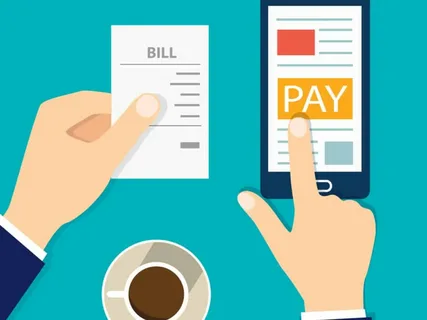The Hidden Costs of “Free” Financial Advice
Most people love getting something for free. Free samples at the grocery store, free shipping on orders, free consultations with professionals. But here’s the thing about “free” financial advice – it almost never actually costs nothing.
When someone sits down with you for an hour to discuss your retirement accounts, investment strategy, or insurance needs without charging a consultation fee, they’re not doing it out of the goodness of their hearts. They’re getting paid somehow. The question is: by whom, and how much is it really costing you?
How Commission-Based Advisors Actually Make Money
Let’s talk about how most “free” financial advice actually works. The advisor meets with you, reviews your situation, and makes recommendations. Sounds helpful, right? But when they suggest specific products – mutual funds, annuities, insurance policies – they’re often earning a commission on whatever you buy.
These commissions can range anywhere from 1% to 8% of your investment, sometimes even higher for certain insurance products. Put $100,000 into a mutual fund with a 5% front-end load, and $5,000 goes straight to the advisor before your money even starts working for you. That’s not exactly free advice.
The problem gets worse when you realize these commissions create a built-in conflict of interest. Your advisor might genuinely want to help you, but they’re also trying to pay their mortgage. When two investment options exist – one that pays them a 5% commission and another that pays 1% – which one do you think gets recommended more often?
The Products That Pay the Highest Commissions
Not all financial products are created equal when it comes to advisor compensation. Annuities, for instance, are notorious for paying massive commissions – sometimes 6% to 10% of the amount you invest. Whole life insurance policies? Those can pay first-year commissions of 80% to 100% of your annual premium.
This is where it gets expensive. These high-commission products aren’t necessarily bad, but they’re often more complex and expensive than simpler alternatives. A variable annuity might pay your advisor $7,000 on a $100,000 investment, while a low-cost index fund paying a 1% commission would only net them $1,000. Guess which one gets pushed harder?
The issue isn’t that advisors are evil people trying to rip you off. Most aren’t. But the system creates incentives that don’t always align with your best interests. They need to earn a living, and the products that help them do that most effectively might not be the products that help you most effectively.
What You’re Really Paying Over Time
Here’s what most people don’t see coming: commission-based advice doesn’t just cost you once. Many investment products come with ongoing fees that keep paying the advisor year after year. These trail commissions might be 0.25% to 1% annually, which doesn’t sound like much until you do the math.
On a $200,000 portfolio, a 1% annual fee is $2,000 every single year. Over 20 years, that’s $40,000 in direct fees – and that’s before accounting for the lost investment growth on that money. When you factor in compound returns, the real cost could easily exceed $100,000.
Compare that to what you’d pay if you decided to hire a fee-only financial advisor who charges transparently for their time. You might pay $2,000 to $5,000 annually for comprehensive planning, but there are no hidden commissions or ongoing product fees eating into your returns. The math often works out significantly better over the long run.
The Advice You Don’t Get
Maybe the biggest hidden cost is the advice you never receive. Commission-based advisors make money when you buy something. They don’t make money when they tell you to pay down debt, max out your employer’s 401(k) match, or keep your emergency fund in a high-yield savings account.
So guess what kind of advice gets emphasized? You’re more likely to hear about the great new investment opportunity than about boring but effective strategies like increasing your savings rate or rebalancing into lower-cost funds.
Some advisors won’t even take you on as a client unless you have a certain amount to invest – often $100,000 or more. If you’re just starting out and need guidance the most, you might not be “profitable” enough for their business model. That’s not really free advice either.
How to Spot the Real Cost
So how do you figure out what you’re actually paying? Start by asking direct questions. How does your advisor get compensated? Do they earn commissions on products they recommend? Are there ongoing fees beyond the initial purchase?
Look at the paperwork too. Mutual fund prospectuses list sales loads and 12b-1 fees. Insurance policies show commission structures if you know where to look (or ask). If someone gets defensive when you ask about compensation, that’s usually a red flag.
The other big tell: if every recommendation involves buying a product, you’re probably dealing with a salesperson more than an advisor. Real financial planning includes a lot of unglamorous advice about budgeting, tax strategies, and debt management – stuff that doesn’t generate commissions.
What Actually Free Looks Like
True free financial advice does exist, but it’s limited. You might get genuine guidance from a friend or family member with financial expertise. Some employers offer basic financial wellness programs. Non-profit credit counseling agencies provide free debt advice.
But comprehensive financial planning – the kind that looks at your whole financial life and creates a coordinated strategy – that’s never free. Someone’s getting paid. The question is whether you’re paying them directly and transparently, or indirectly through commissions and fees you might not fully understand.
The irony is that paying upfront for advice often costs less than “free” advice over time. It just feels more expensive because you see the bill. Meanwhile, commission-based advice quietly chips away at your returns year after year, and most people never calculate the real cost.
When you’re making decisions about your financial future, it’s worth knowing exactly who’s getting paid what, and whether their incentives match your goals. Free advice might seem like a bargain, but the hidden costs add up fast. Sometimes the best value comes from paying for transparency.






